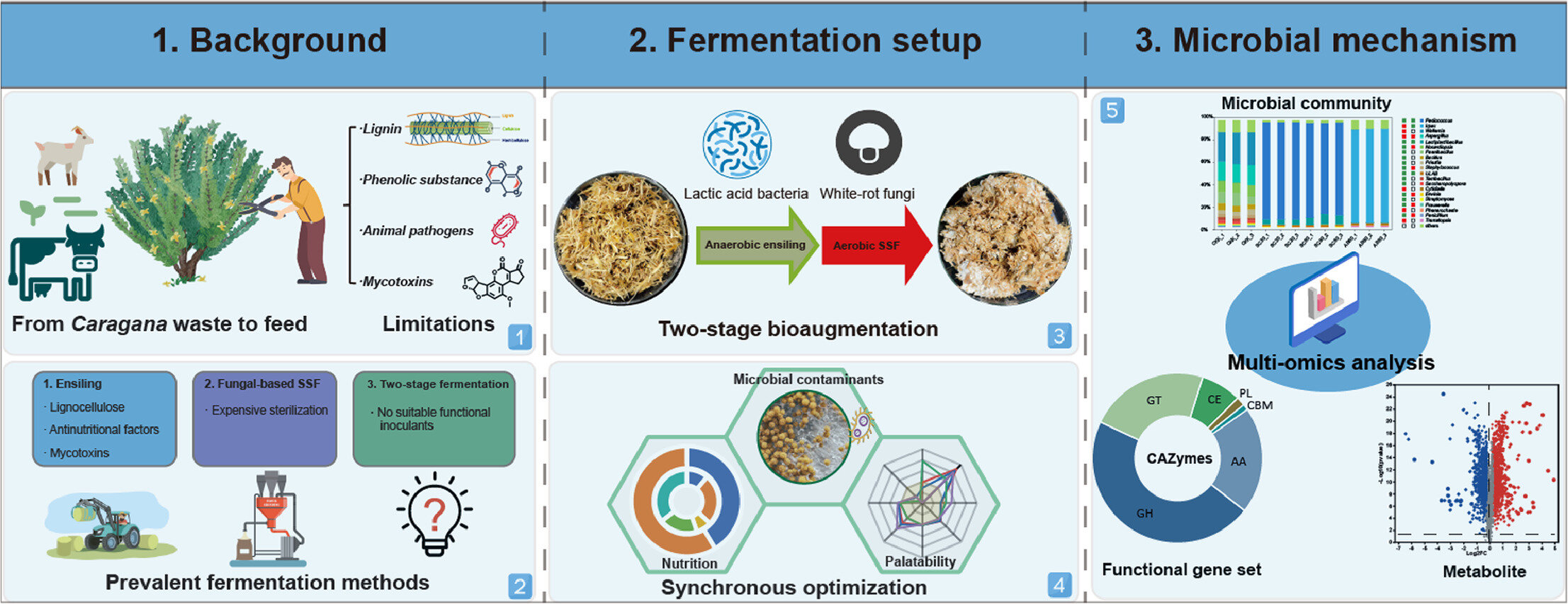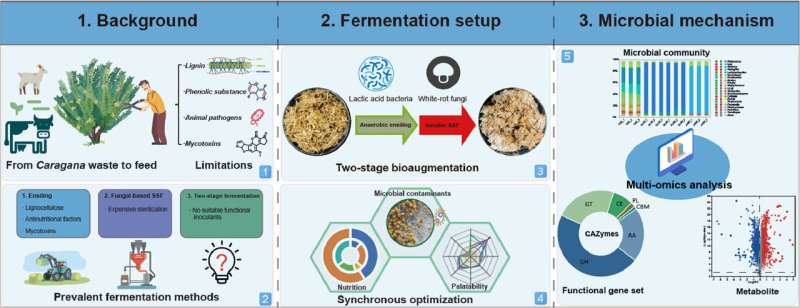

In an advance for agricultural waste management, scientists from the Chinese Academy of Sciences have devised a method to convert Caragana korshinskii Kom. waste, a common forestry byproduct in China, into a potential ruminant feed. The research, published in the Journal of Bioresources and Bioproducts, details a two-stage bioaugmentation process that significantly improves the nutritional value and safety of CKK waste.
Caragana waste, although abundant, has been challenging to utilize due to its high lignin content and presence of anti-nutritional factors (ANFs) such as tannic acid and phytic acid. These factors limit its digestibility and palatability for ruminants. The traditional ensiling and fungal-based SSF methods have not been entirely effective in addressing these issues.
The innovative TBA process involves an initial anaerobic ensiling phase, where CKK waste is inoculated with Lactiplantibacillus plantarum LP1, a bacteria that suppresses animal pathogens and enhances the material with potential probiotics. This is followed by an aerobic SSF phase, where the ensiled CKK is inoculated with the white-rot fungus Irpex lacteus F17, which is key to the improvement in nutrient composition and reduction of phenolic substances and mycotoxins.
The study’s results are promising, with the crude protein content in CKK increasing by 39.2%, and lignin, total phenolic substances, and tannic acid content decreasing by 24.4%, 52.2%, and 51.4%, respectively. Mycotoxin levels, including aflatoxin B1, zearalenone, and vomitoxin, were rendered negligible, confirming the safety of the feed.
The research team, led by Guilin Du and Beiru He, highlights the TBA strategy’s ability to transform challenging and unpalatable CKK waste into a nutrient-enriched and safe mycelium-based bioproduct. This not only enables the valorization of an underutilized forestry resource but also contributes to sustainable economic development and ecological balance.
The study’s findings suggest that the TBA method could be a game-changer for livestock farming, offering an alternative feed that is not only nutritious but also safe and environmentally friendly. This innovative approach can potentially revolutionize the way agricultural waste is managed globally, turning it into a valuable resource.
More information:
Guilin Du et al, Valorization of the Caragana waste via two-stage bioaugmentation: optimizing nutrition composition, palatability, and microbial contaminant control, Journal of Bioresources and Bioproducts (2024). DOI: 10.1016/j.jobab.2024.07.004
Provided by
Journal of Bioresources and Bioproducts
Citation:
Transforming caragana waste into nutritious ruminant feed (2024, September 26)
retrieved 26 September 2024
from https://phys.org/news/2024-09-caragana-nutritious-ruminant.html
This document is subject to copyright. Apart from any fair dealing for the purpose of private study or research, no
part may be reproduced without the written permission. The content is provided for information purposes only.